EVENT
Suggested Route|Trip to encounter “Kagura”, Kuji 3Days and 2Nights Jan.20th(Fri)-22nd(Sun),2023
- 2022
- suggested-route
- Experience
- Appreciation
Day2
Jan.21st(Sat),2023
Explore Kuji deeply & thoroughly
| Itinerary | Remarks | |
|---|---|---|
| 09:45 | From Kuji Sta. to Kuji Underground Aquarium & Science Museum Monguranpia (10:00) | Rent a car (at Kuji Station) |
| 10:00 | Visit Kuji Underground Aquarium & Science Museum Monguranpia | |
| Highligh | Lunch- in Kuji City | |
| 13:00 | From Kuji Sta. to Kosode Female Diver Center | |
| 13:30 | Visit Kosode Female Diver Center | |
| 14:00 | Kosode Female Diver Center, in Kuji City | |
| 14:30 | Stroll in Kuji City | |
| Visit Hotel Accommodation in Kuji City |
Kuji Sta.(Rent a car)

Rent a Car
Dep. 09:40
Arr. 10:00
Travel time| 20min
10:00 Kuji Underground Aquarium & Science Museum Monguranpia
Minato Oasis
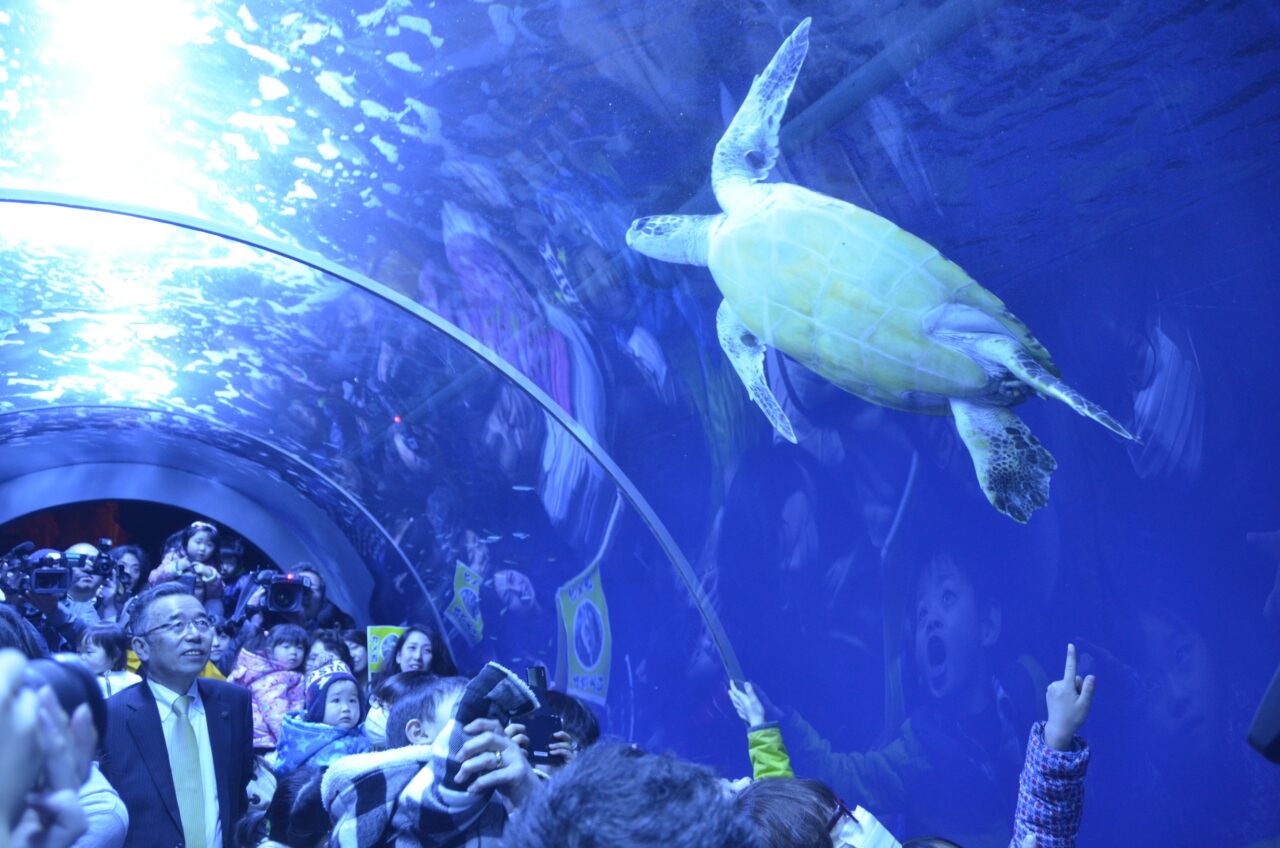
▲Big turtles and fishes of Kuji swimming through the long, long tunnels
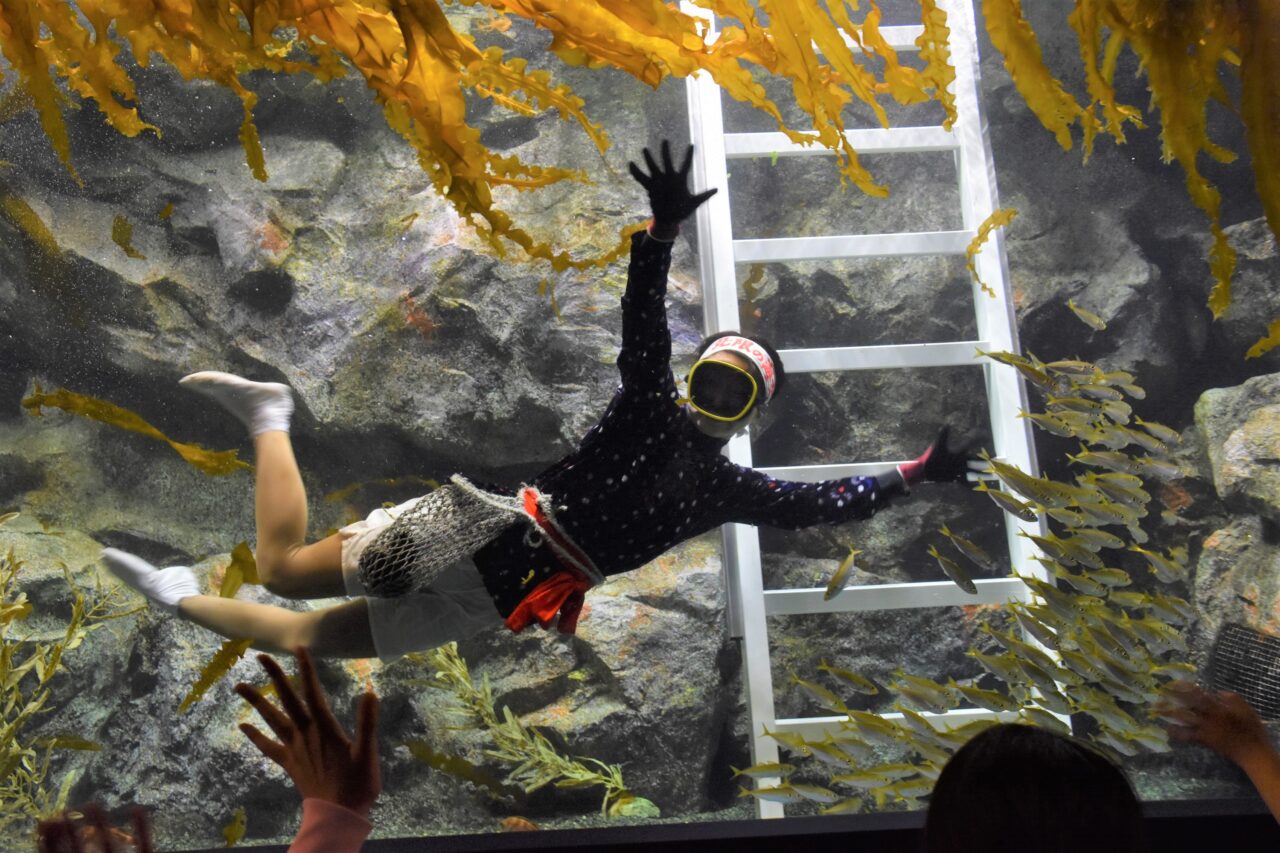
▲Female divers’ diving show
Sakana-kun, the famous TV star, is the cheerleader of this very first underground aquarium in Japan
A fascinating aquarium reconstructed from a tunnel, which is absolutely rare even in Japan! The true feast for the senses come on Saturdays, Sundays, and public holidays in the “Kuji’s water tank” when there’s a female diver diving show. There are many kinds of jellyfish corners on display, the “tunnel tank” in which “Kamekichi, a green sea turtle who survived the earthquake, swims. Also don’t miss the “interactive tank” (Fureai tank) at which visitors can actually touch the sea creatures. Visitors can watch and to experience closely the “water tanks” by putting their hands under water through the window and feed the marine creatures. At the “Gala Alpha Experience”, participants can also touch the fishes and let them beautify your hands by eating out the dead skin. At the “Sakana-kun” corner, meet with the fishes raised by the cheerleader “Sakana-kun” together with many original items. Also, at the emergency management exhibition room, visitors can learn plenty of natural calamity preventative strategies and see places were destroyed by the Great East Japan earthquake.
Kuji Underground Aquarium & Science Museum Monguranpia
1-43-7, Mugyo, Samuraihama-cho, Kuji-shi, Iwate,Japan 028-7801
Phone|+81(0)194-75-3551
Open from Apr to Oct, Nov to Mar (last admission= 30 minutes before closure)
Closed on every Monday (the next day if it’s a public holiday), Dec 31st, and Jan 1st
(* Remaining opened on Apr 25th & May 2nd)
https://www.moguranpia.com/
Best gourmets of Kuji
In Kuji City, there are many wonderful restaurants- weave an indulgent trip with seafood and many other local dishes of Sanriku. Both delicious food and scenic spots of Kuji await!

Kosode Female Diver Center
Be enthralled by the northern female divers going under water right in front of you!
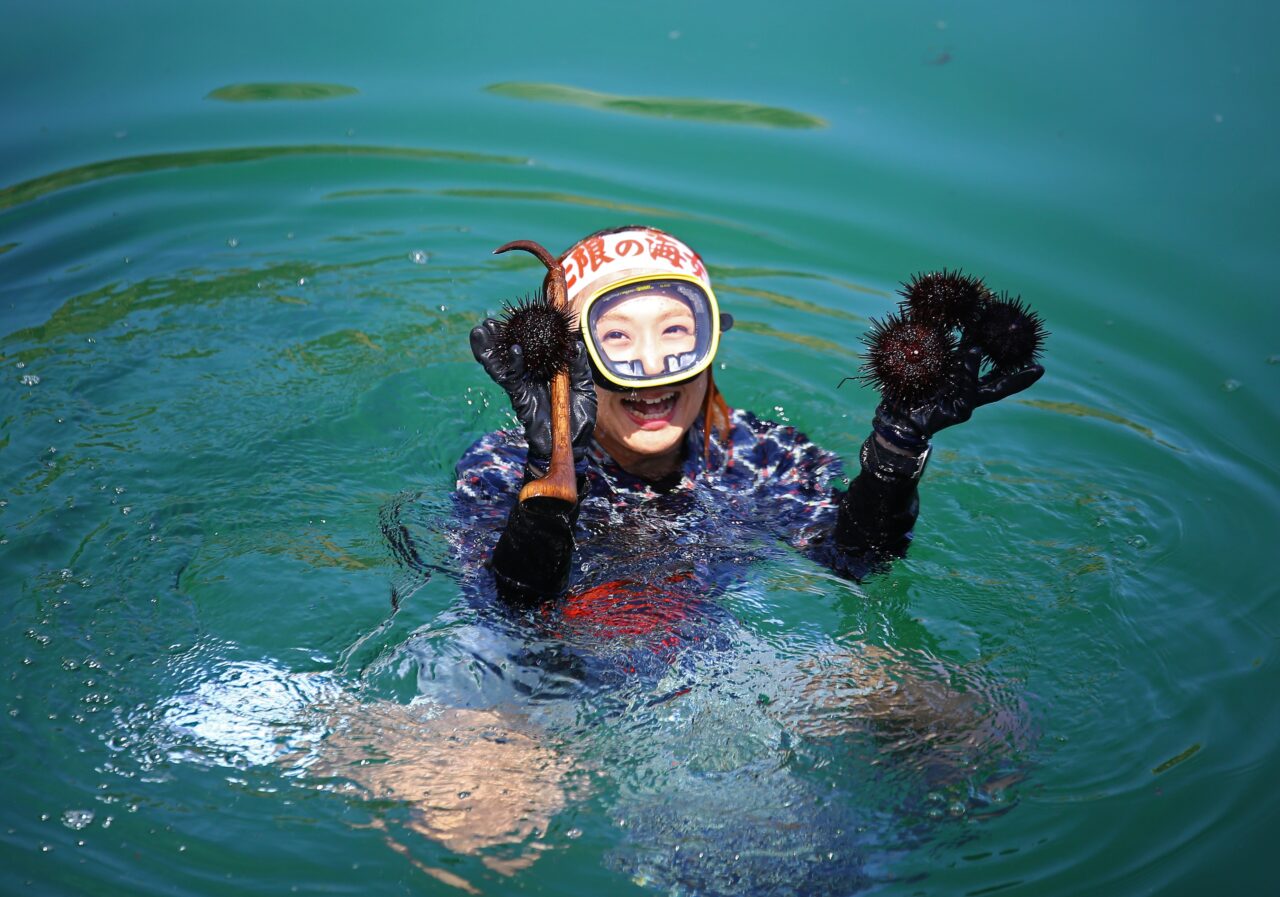
▲Northern female divers with the Kosode coast as their stage
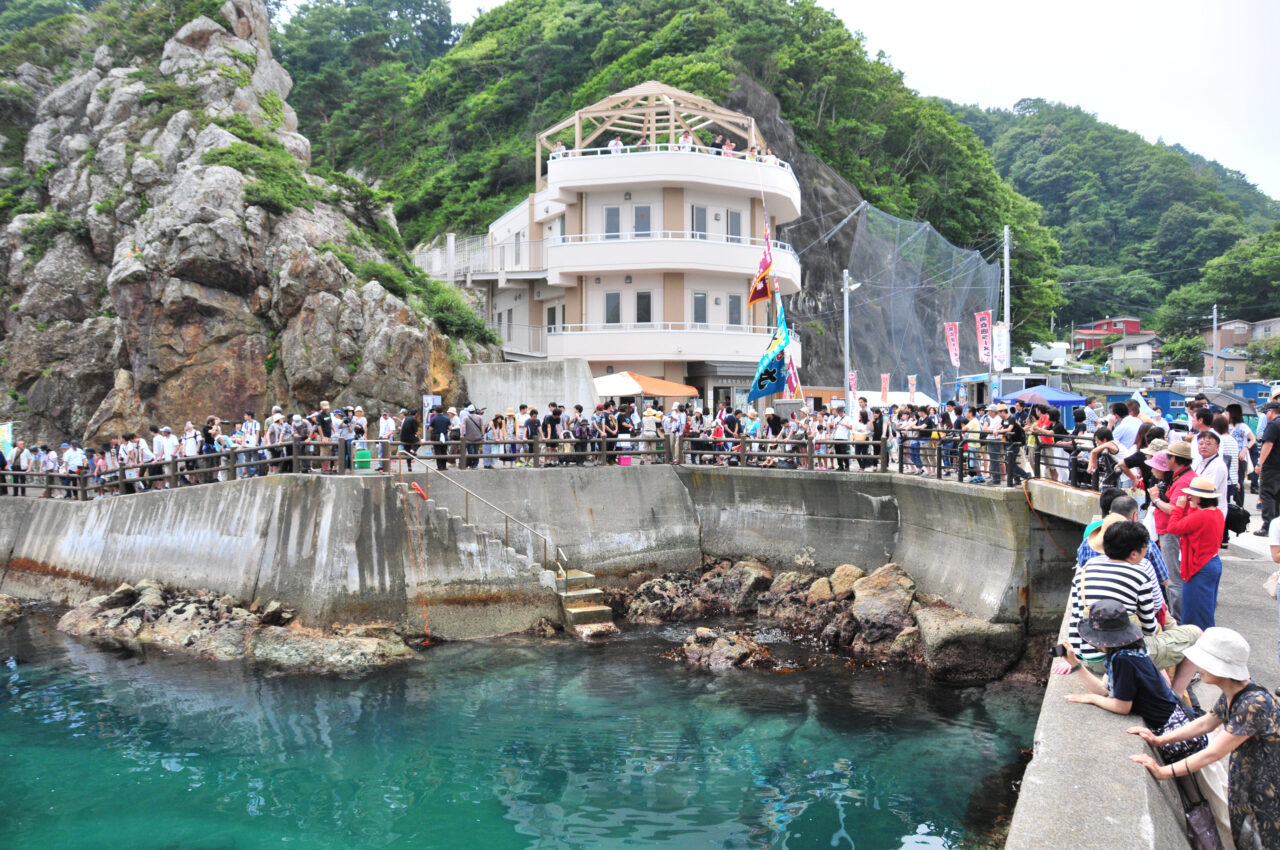
▲The tourist hotspot- Kosode Female Diver Center
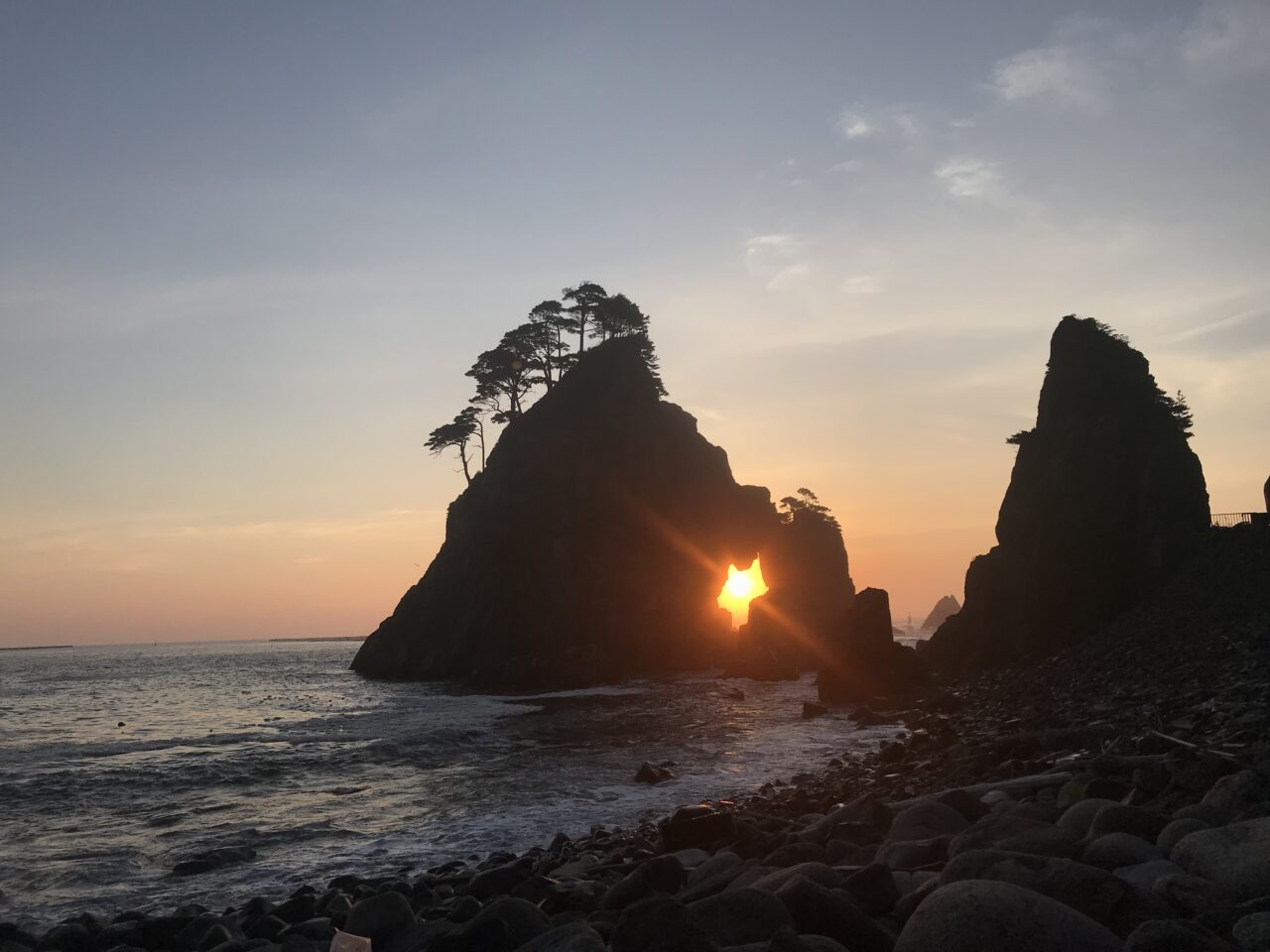
▲The rising sun above the horizon through the “Hanging bell” rock is undoubtedly Instagrammable!
Kosode Female Diver Center- the famous filming location of the TV drama “Ama-chan”.
A tourist hotspot along the Kosode coast famous for “Northern female divers”. Right next to the diver center is the venue of the female diver’s diving show with the wonderful enetrtainment available from July to September. The drama “Ama-chan” also resembles faithfully how the female divers go under the sea to collect sea urchins and seaweed indeed. On the beach, there is a tourist information center and direct sales facilities on the 1st floor, an exhibition corner about female divers on the 2nd floor, and a rooftop terrace on the 3rd. Also, on the way to the diver center visitors will walk through the famous spot “Hanging bell rock”, named for its bell-shape rock like a bell hanging from the cave. The sunrise scene there is stunning and it can only be seen for one week before and after the summer solstice. It’s an epic view you can find in nowhere else!
Kosode Female Diver Center
24-110-2, Ube-cho, Kuji-shi, Iwate,Japan 028-8111
Phone|+81(0)194-54-2261
Opening Hours|AM9:00am~PM5:00pm
Free admission
Kuji Tourist Information KUJI VISITORS’ GUIDE
A stroll in Kuji City
There is a huge number of secretive spots to visit beside the famous ones and classics captioned! Road trip and strolls are equally fun- explore your discernible Kuji!
See the below for more details!
See the below for more details!
KUJI tourism & products Association, tourism information
https://www.kuji-kankou.com/explore
Areas
Artists
-
Natsui Daibonten Kagura Preservation Society
The Natsui Daibonten Kagura has been passed down by yamabushi (mountain hermit) since 1354 during the period of the Northern and Southern Courts, to be dedicated to Daibonten deity at the Taiho-in temple in Natsui town. It has been a tradition through the ages that they go around houses during the New Year’s holidays to ward off evil spirit, to pray for safety of family and to appease the souls of the dead. The Natsui Daibonten Kagura Preservation Society was founded in 1978, and the Kagura was designated as the Intangible Folk Cultural Property by Iwate prefecture in 1999.
The Natsui Junior High School is contributing as a whole to the inheritance of Natsui Daibonten Kagura. Trained under the Preservation Society members, all the students become the dancers at the school festival, the Natsui City Folk Performing Arts Festival and others. -
Shirogane-Shitogongen Kagura Preservation Society
The Shirogane-shitogongen Kagura is originated from the Shirogane district in Hachinohe, a port town. The dance comes with a lion head props called “Gongen-sama”. It is one of the Yamabushi-style kagura with theatrical performances aiming to drive away the evil powers, celebrate big catches, great harvests, and worship gods. The precious, historic lion head was passed down to Hachinohe city in 1758 and now, the dance includes as many as 20 difference performances. During the Spring Prayer (generally held for a number of days since the New Year’s Day every year, residents in the Shirogane district usually put out decorations at their entryway and on July 6th and 7th, more than 10 performances are dedicated as the annual festival at Mishima Shrine, the guardian of the entire district.
-
Oitaira-Komaodori Preservation Society
The Oitaira Komaodori has been passed down in the Oitaira district of the Natsui Town; it’s commonly believed that its origin traces back to early Meiji period as a dedication to the Komagata Shrine.
The dance is a folk performing art being passed down in the former Nanbu region, and it’s said that the dance resembles a young horse released in spring returning in autumn.
The dance thrived before WWII but it was discontinued for a short while in the postwar period as male dances were all summoned to the frontliners for the soldiers. Later in 1960, the senior residents proactively stroke to restore the tradition that the preservation committee was finally formed with the late Genetsu Oitaira as its chairman. -
Yamane Kagura Preservation Society
Yamane Kagura is a ritual dance greatly influenced by the “way of trial and practice” of the Yamabushi mountain monks. As some old kagura props found in 1664 revealed, the dance might have been passed down from the former Morioka Domain so it was originally called “Noda Kagura” before it was known as “Yamane Kagura”.
-
Tendaiji Bugaku Preservation Society
Tendaiji Temple at Mt. Hachiyosan is home to ten bugaku performing dance masks from the Kamakura to the Muromachi period (designated as tangible cultural properties by Iwate Prefecture) while the dance itself was, unfortunately, lost.
Later, a string of surveys conducted for the preservation of Hachiyosan Tendaiji performing arts started in 1994 proved the dance is actually the one of the Imperial Household Agency (designated as national important intangible cultural property). Participating members of the studies then joined with the Hachibasan Tendaiji Preservation Committee to form the new Tendaiji Bugaku Preservation Committee in 2020. -
Heromachi Kagura Preservation Committee
Heromachi Kagura is one of the streams of Kunohe Village Esashiya Kagura. Around 1935, late Mr. Shinmatsu Kubo, a Kagura dancer from the Esashi family, started gathering young residences from the former Yamagata Village (currently Yamagata-cho, Kuji City) to revitalize the ritual dance, which was followed by the assistance from late Mr. Yasuhikozou Ochi around 1965. Due to migration, there were not sufficient number of male dancers so female dancers such as the late Shinobu Shimodate, Tsuyo Shimodate, and Kiku Shimodate joined took over and passed down the dance.
Pupils from the Toro-machi Elementary School have been contributing to perform the dance as children’s kagura since 1993. Even after the closure of the school in 2012, the Heromachi Kagura Preservation Committee has been tremendous effort to preserve the traditional dance. Now, there are 16 committee members proactively promote the dance. -
Ono Naru Ikazuchi Taiko
Ono Naru Ikazuchi Taiko was formed in 2000 by a group of young men and women who took a taiko drumming course. Today, the group has 28 members ranging in age from 5 to 46 years old.
The name, “Ono Naru Ikazuchi Daiko”, comes from Naru Ikazuchi Shrine, the town deity of Ono, in Hirono Town (formerly Ono Village). It is hoped that the taiko drumming will develop to become something that represents the former Ono Village, and be loved by the villagers as a prayer for a good harvest and family safety.
Trained in musical composition and performance by Warabi-za, a renowned troupe based in Akita Prefecture, the group is named after the image of lightning, and their drum music is valiant and charged with youthful passion and freshness.
Sanriku International Arts Festival 2022 REVIVE
– An FY 2022 Japan Cultural Expo Project Presented and Co-presented by Japan Arts Council and Agency for Cultural Affairs, Government of Japan

Organized by|Sanriku International Arts Committee, Japan Arts Council, and Agency for Cultural Affairs, Government of Japan
Co-organized by|Hachinohe City, Hashikami Town, Hirono Town, Kuji City, Noda Village, Fudai Village, Tanohata Village, Iwaizumi Town, Miyako City, Yamada Town, Otsuchi Town, Kamaishi City, Ofunato City, Rikuzentakata City, Sumita Town, Sanriku Railway Co., Ltd., Japan Folk Performing Arts Association, NPO Iwate Arts Support Center, and NPO Japan Contemporary Dance Network
Cooperated by|NPO Shinsai Regain, imajimu LLC, Tohoku Cultural Property Video Research Institute, Minna no Shirushi LLC